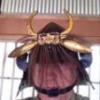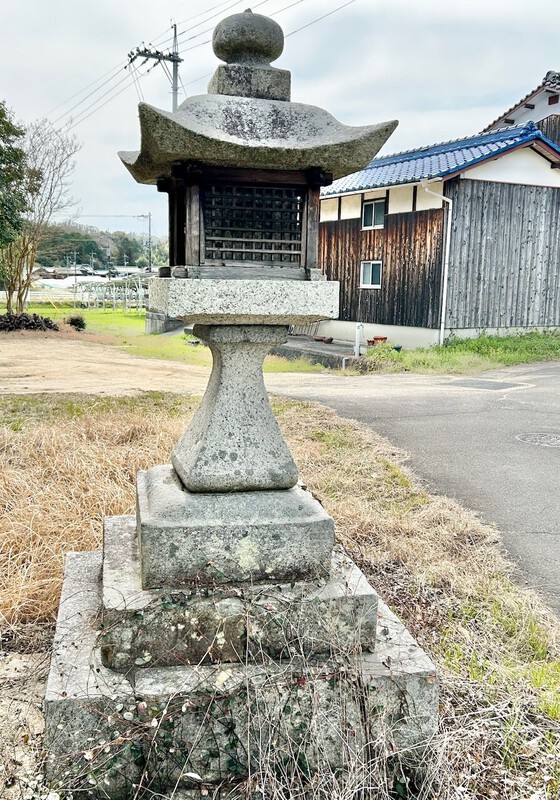-
Posts
14,203 -
Joined
-
Last visited
-
Days Won
268
Content Type
Profiles
Forums
Events
Store
Downloads
Gallery
Everything posted by Bugyotsuji
-
The reason I said 'semi-joking' is that they look like French button mushrooms.
-
Yes, many have attempted and a few have succeeded in recreating utsuri. Once I read about a modern smith coming to the conclusion not too long ago that utsuri was a by-product of smiths pursuing sharpness, in a time when beauty was not quite so important.
-
Masamune X Dai Mago 正宗 代孫 SoShu Ju Tsunahiro 相州住綱廣 (Still working on this. Hard to make out 'X', the generation number.)
-
備州三原住貝正近作 Bishu Mihara Ju Kai Masachika Saku Muromachii/Momoyama Period (?) Much better shots, thanks!
-
They look like mushrooms to me! (Semi-joking...)
-
Did we not see this same set with that bullet hole about ten or fifteen years ago here? Steve, thanks but those shots are now too close! Can you take a couple of Mei overall shots from different angles with differing light and shadows? Likely it says 備州長船住?... but then more faintly... 直 or 道?正?作
-

Kicking the hornets nest question ;)
Bugyotsuji replied to obiwanknabbe's topic in General Nihonto Related Discussion
All good questions, Kurt. There may be no monetary value, although the ones on eBay are probably hopeful, but to some people these can interesting and special study pieces. Show what you find to people and collect opinions before making up your mind how to proceed. A friend here has reformed a couple into handy knife blades, keeping the best section of ji and hamon visible, if still available. -
Yesterday I came across another old stone wayside lantern, the third I've discovered during long walks in this area. The square opening also reminded me of this interesting tsuba. Photos follow, from two sides. A B
-

A Daughter of the Samurai
Bugyotsuji replied to Oldman's topic in General Nihonto Related Discussion
It was bashin/umabari which were used (particularly in the Kyushu region) to cut the ankle of a hard-ridden and tired horse, to relieve turgid blood, as a fleam was used in other parts of the world. -
If you crop your photos you should be able to post them here.
-
Coincidentally there is a Kozuke Daijo Sukesada thread here today... https://www.militaria.co.za/nmb/topic/51947-translation-help/#comment-542800
-

Japanese Percussion Chosu gun from Bakumatsu
Bugyotsuji replied to JackFrost's topic in Tanegashima / Teppo / Hinawajū
Well done on getting it open. That bisen is likely rusted into place. Yes, nothing yet legible, but it can’t be helped. Many were not signed at all. These Chōshū long guns were mostly made in Sesshū, Sakai (Osaka) where the Chōshū agent would go to place the Daimyo’s orders, so there is a very high possibility of that. I have had two or three examples over the years, with just the one Chōshū long gun today; it too was made in Osaka. -

Japanese Percussion Chosu gun from Bakumatsu
Bugyotsuji replied to JackFrost's topic in Tanegashima / Teppo / Hinawajū
Hard to describe, but if you are right-handed, hold the gun upright, with your fingers and thumb gripping the top edges of the front of the stock, and with the hammer in your right hand, bang the barrel out into the palm of your left hand. Don't worry about the stuck ramrod. The ramrod looks short enough to allow hits on the base of the muzzle. (PS This is all assuming that the person who varnished it has not glued everything into position...) -
You can cut out the 1500-1600 part, if it's shinto as they say. Their suggestion of Yokoyama 'Ueno' for 上野 is a wrong reading in this context. The smith they (the store) are alluding to is 'Kozuke' Daijo Sukesada, who was a genius in his own right. Sadly there are countless forgeries out there, so you would need to focus on cross-checking yours against genuine signatures. (The old paperwork itself says very little, only recording the two characters, and as Steve says, the Mei Sukesada does not suggest any particular Sukesada. Once upon a time, the word 'Sukesada' simply meant a Bizen sword to the masses.) See https://www.seiyudo.com/wa-090924.htm PS Congratulations on a lovely object with a particularly nice koshirae.
-

Japanese Percussion Chosu gun from Bakumatsu
Bugyotsuji replied to JackFrost's topic in Tanegashima / Teppo / Hinawajū
Ah, thanks for the additional shots. Yes, as these guns age, they do tend to form running cracks, often along the grain, each of which presents us with a slight dilemma. If you can see daylight, i.e. the mekigi holes are clear right through (no remaining mekugi pegs inside) then the barrel should part out. There is nothing else holding it in. Remove the ramrod, and cock the hammer. You may need a few taps under the muzzle with a rubber hammer to encourage the initial breakaway. The stock tends to shrink and grip onto the steel of the barrel, and sometimes rust forms in there too. Gentle encouragement all round should help to dislodge it. If you do find a Mei chiselled under the barrel, please post! Even better, though not absolutely necessary, if you can loosen the bisen breech screw. (Not usually an easy job!) Thanks. -

Japanese Percussion Chosu gun from Bakumatsu
Bugyotsuji replied to JackFrost's topic in Tanegashima / Teppo / Hinawajū
Hi Jon, good to see you here, welcome! Choshu is the region in the southwest of the main island of Honshu, where the Mohri/Mouri were the overlords. Cho is 長, short for 長門, and Shu is 州 province or region. As in the linked thread, yours is a smoothbore, not strictly a 'rifle', a typical long gun from this area. The shorter stock and naked barrel/muzzle section is the first great indicator of these guns, as is the style of metalwork inlay on the lockplate and trigger guard. The rear sight with the flat top and three holes is a nod to the Mohri family crest. There are various other characteristics to notice on these. Yours seems like a good example of an updated (post-matchlock) percussion gun. The hammer is slightly elongated, rather unusual, possibly a later adaptation, and I notice the barrel band has been cut away. Not sure what you mean by a split under the barrel. There was a deliberate split on most Tanegashima style guns directly below the karuka ramrod throughout the length of the forestock, but you mean something else? Thank you for posting. -
井桁 (igeta) has to be one possibility, a well mouth design. I have seen them reinforced with iron, too. It’s a fun design, either way.
-
With Shakudo tsuba many people in Japan recommend wearing soft cotton gloves, i.e. no bare hands.
-
Huntodesu, some of what you write fits the certificate, but… where did you get the rest from?
-
Apologies, for the deleted post. I see now that the only date given is for the cutting test, not for the blade's manufacture. (You will have to look up Kanefusa and decide if it is Muromachi, which is not mentioned in the attribution.)
-
Since we can only see part of the problem I would do nothing for the time being. You often see saya out in the marketplace that are temporarily bound with string, elastic, etc., so I would be tempted to do a temporary fix (making sure nothing is touching or rubbing as Grev says), while following Lewis's advice to find a Togi- or Saya-Shi.
-

Japanese sword maker translation
Bugyotsuji replied to AirborneA152's topic in Translation Assistance
o is the correct pronunciation, BaZZa, but to me it looks strange in context, in English, so I tend to use the old Romanization 'wo' of を which is part of the 'wa (wi wu we) wo' line of the traditional Japanese alphabet. You are right to point this out and I need to sit back and ponder... -
Great work, Simon, looking a lot better already. Everyone was giving you like signs, but waiting to see who would enlighten us first!
-

Japanese sword maker translation
Bugyotsuji replied to AirborneA152's topic in Translation Assistance
Kiipu's link goes deeply into this and is a good read. There is of course a difference between the 'correct' way to write it, and the 'correct' way for us to read it. The simple answer is that both tsukuru kore and kore (o, or wo) tsukuru are 'correct' in the sense that they are minimal readings of the inscription from which any Japanese would get enough meaning to understand. Listening Japanese would nod in understanding, even without a past tense. Kore wo tsukutta or kore wo tsukurimashita would actually be more grammatically fluent and correct, but would go beyond what is inscribed there. Think in English for a minute. John make this, or John this make. Both convey simple meaning. But if you want to fully 'translate' them, you would adjust into the past tense and say, This was made by John, or John made this. In other words, both Tom and Uwe are correct for a Japanese audience, or someone educated sufficiently in Japanese sword language. Remember, these are classical Chinese characters written with no Japanese endings on them, so we are left to guess how they relate to each other. Thus, personally speaking, I do not think it matters much how we render the ending of such a signature; there is certainly no need to worry unduly about manners or correctness. PS Your blade actually says 造之 'Tsukuru kore', reading the characters as they are. Kore wo tsukuru is a slight nod, or further step towards correct grammar, but is an interpretation, along the path of how to render classical Chinese into readable Japanese... -
It may be a treasure map tsuba that the previous owner put back together…







